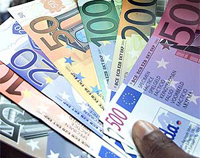East European Crisis may Hit Overexposed Western Europe
By Toni Straka

Emerging East European countries are set to become the worst nightmare of Eurozone banks with a heavy exposure to these once so profitable markets. Looking at the share prices of Italian Unicredit or Austrian Erste Bank and Raiffeisen International - all down more than 60% from their record highs seen a year earlier - the worries appear to have a very real background.
Ambrose Evans-Pritchard offers the saucy details in yesterday's web edition of the Telegraph. After a wave of Eurozone bank insolvencies that lead to a industry concentration through rescue mergers in Germany, the Netherlands, Spain, and the UK, it now appears that tiny Austria may be left holding the bucket in Eastern Europe. Loans to Eastern emerging markets have reached a critical level of 85% of Austria's GDP which is around €240 billion or €32.600 per inhabitant.
According to the Telegraph: Austria’s bank exposure to emerging markets is equal to 85pc of GDP – with a heavy concentration in Hungary, Ukraine, and Serbia – all now queuing up (with Belarus) for rescue packages from the International Monetary Fund. Exposure is 50pc of GDP for Switzerland, 25pc for Sweden, 24pc for the UK, and 23pc for Spain. The US figure is just 4pc. America is the staid old lady in this drama.
While the world has so far focused on the US banking crisis, the centre of attention will soon shift to Europe as loans in danger of default dwarf the US losses.
“This is the biggest currency crisis the world has ever seen,” said Neil Mellor, a strategist at Bank of New York Mellon.
Experts fear the mayhem may soon trigger a chain reaction within the eurozone itself. The risk is a surge in capital flight from Austria – the country, as it happens, that set off the global banking collapse of May 1931 when Credit-Anstalt went down – and from a string of Club Med countries that rely on foreign funding to cover huge current account deficits.
The latest data from the Bank for International Settlements shows that Western European banks hold almost all the exposure to the emerging market bubble, now busting with spectacular effect.
They account for three-quarters of the total $4.7 trillion £2.96 trillion) in cross-border bank loans to Eastern Europe, Latin America and emerging Asia extended during the global credit boom – a sum that vastly exceeds the scale of both the US sub-prime and Alt-A debacles.
Recent interest rate moves to defend national currencies show the grade of desperation.
Hungary stunned the markets by raising rates 3pc to 11.5pc in a last-ditch attempt to defend the forint’s currency peg in the ERM.
Click here to read the full text of the article.
Subscribe to Pravda.Ru Telegram channel, Facebook, RSS!


